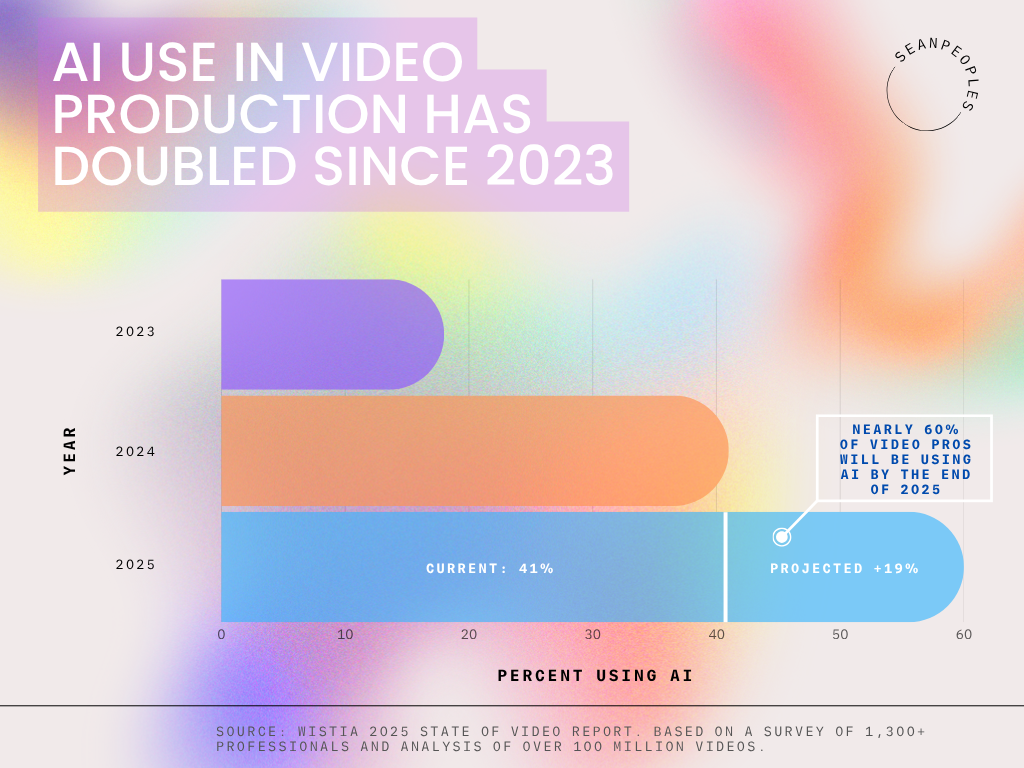What Kind of Videos Work in 2025? A Guide for Mission-Driven Organizations
If your organization is investing time and money into video, you want to be sure it’s working. But what does that mean in 2025? Higher engagement? More donor conversions? Longer watch times?
The answer depends on what kind of videos you're making and how you're using them.
Thanks to Wistia’s newly released 2025 State of Video report, we have fresh data that can help nonprofits, NGOs, and mission-driven organizations create content that doesn’t just look good but actually performs.
Let’s break it down.
The State of Video in 2025: What Changed
Video continues to dominate digital communications. In 2024 alone, more videos were created, played, and watched than ever before. But here’s the catch. Engagement is down, especially for short-form content.
According to Wistia:
Engagement rates dropped 7 percent across the board.
Videos between 3 and 5 minutes saw the steepest decline, losing 10 percent in viewer engagement.
Viewers expect more and bounce quickly if the message isn’t clear from the start.
For nonprofits, this means that simply making a video isn't enough. You need the right kind of video, designed with purpose.
Three Types of Videos That Work for Nonprofits
1. How-To and Educational Videos Lead the Pack
Wistia reports that how-to videos have the highest engagement rates across all lengths, especially under five minutes.
Why it works: These videos provide immediate value. They teach, explain, or clarify something the viewer cares about. For nonprofits, that might mean:
How a donation supports a specific program
How to sign up for a volunteer opportunity
How your community can access services
Tip: Keep them short, simple, and visually clear. Use real voices and people from your organization when possible.
2. Webinars and Live Events Build Deeper Trust
Webinars rank as the second most impactful video type according to the report. Nearly half of companies now host webinars monthly. And here’s the kicker—89 percent repurpose those recordings into blog posts, social clips, or email content.
Why it works: Webinars create space for longer stories, live interaction, and expert insights. Plus, they can become the backbone of a month’s worth of content with smart repurposing.
Tip: Plan with reuse in mind. Record your event in high quality, then create shorter clips for Instagram, embed the full version in a blog, or slice up quotes for a newsletter series.
3. Mission-Driven Testimonials Still Convert
Customer testimonials (or, in your case, impact stories) continue to deliver results. Wistia reports a 17 percent conversion rate for testimonial-style videos, outperforming promotional content or social media teasers.
Why it works: Real stories from real people bring your mission to life. Donors want to see who they’re helping and how it matters.
Tip: Keep your testimonial grounded in emotion and authenticity. Skip the script. Let your subject guide the story with their own words and lived experience.
Think Beyond the Video
Every piece you create should be built for reuse. That means slicing up interviews for short clips, embedding your videos into blog posts and donor emails, and adding subtitles so your story travels further—especially on social media.
The good news? You don’t need a big team to make that happen.
AI Is Reshaping Video Creation—And Fast
If you’re wondering how so many organizations are scaling their video output, the answer increasingly involves artificial intelligence. In 2023, only 18 percent of professionals used AI tools to create video. Today, that number has jumped to 41 percent. And by the end of 2025, nearly 60 percent of video teams are expected to be using AI for scripting, editing, dubbing, or distribution.
Here’s a look at how quickly AI adoption is accelerating:
This shift isn’t just about flashy tools or automation. It's a response to limited resources and rising expectations. AI is helping small communications teams create more content, repurpose existing videos, and make their content more accessible with captions, translations, and dubbed narration.
What this means for you:
You don’t need a massive team to stay competitive.
Tools like AI-assisted scripting or automatic captioning can help you save time while keeping your message sharp.
Thinking strategically about AI now can help you get ahead of the curve—especially if you're producing content for multiple audiences or languages.
If your organization hasn’t explored these tools yet, 2025 is the time to experiment. You don’t have to overhaul your process. Just start with one part of your workflow—like refining a script or translating an impact story—and build from there.
Want to Get More from Your Video Strategy?
I help mission-driven organizations create content that connects and converts. From short-form stories to educational series, I build video strategies designed to last.
Get in touch to start planning your next video or sign up for our newsletter below to get more insights like this in your inbox.


